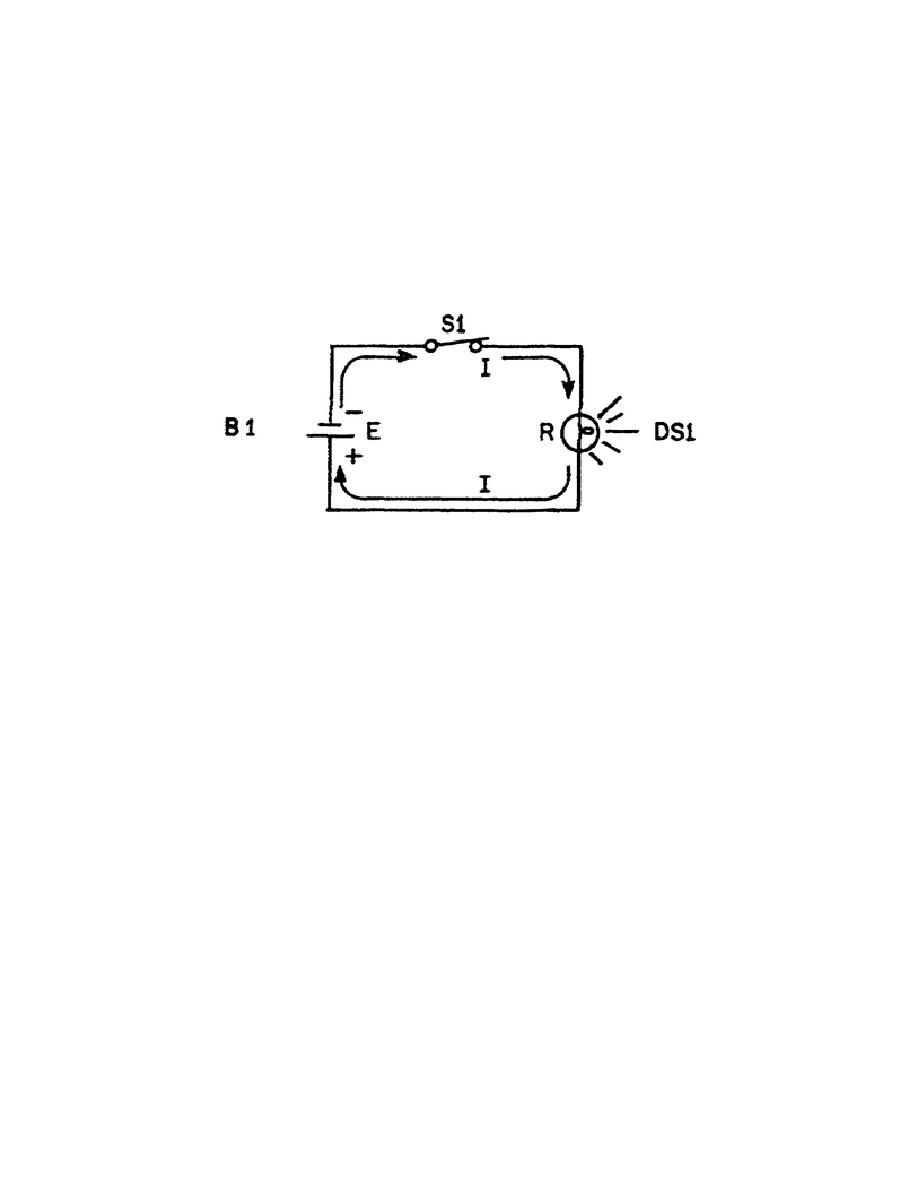
to create the desired effect within the circuit.
This part of the
lesson will discuss some of the characteristics of the components and
how their electrical properties are used in typical electrical and
electronic circuits.
1.
Basic Circuits.
Electrical and electronic circuits may range
from simple one-line circuits to extremely complex specialized
systems.
Probably the most simple practical circuit is that of the
ordinary flashlight.
Figure 1-37 illustrates the schematic diagram
for a single cell battery powered flashlight.
Figure 1-37.
Flashlight Circuit.
The components are illustrated by their symbols.
When the switch
(S1) is closed, current flows through the conductor from the battery
(B1) to the lamp (DS1) and back to the battery. Thus, the circuit is
completed.
The filament of the lamp acts as a resistor in this
simple circuit. By resisting the current flow, the filament produces
heat and the lamp lights. Resistors are used to control the amount
of current in a circuit and to provide a voltage drop. Resistors may
be connected in series or in parallel with other resistors or other
electrical components to obtain the desired output.
Figure 1-38
illustrates series and parallel connected resistors in a simple
circuit.
Capacitors are components that have the ability to store electrical
energy, block direct current, and permit the flow of alternating
current. This unique ability to pass AC while blocking or isolating
DC makes the capacitor a key component in filter networks. Inductors
(or coils), on the other hand, offer considerable opposition to AC,
but little to DC.
Inductors are also used in filter circuits
extensively.
Through selecting the proper set of components,
filtering circuits may be designed to produce the required output for
the circuits they supply. Figure 1-39 illustrates the schematic of a
simple filter circuit employing resistors, capacitors, and inductors.
23
OD1725




 Previous Page
Previous Page
